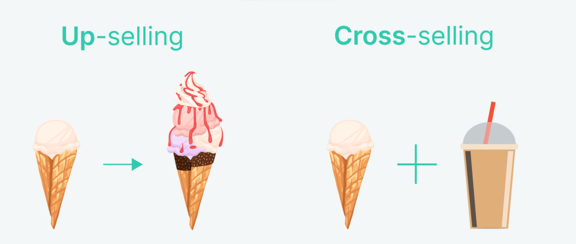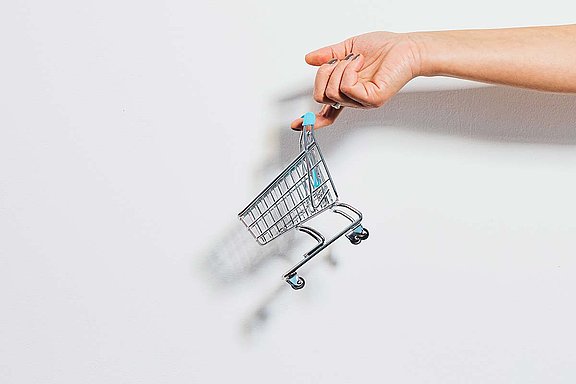Cross-selling and upselling: configurators as a sales tool
Author: Elisabeth Sonnleitner
Do you want to increase your sales and strengthen customer relationships? Cross-selling and upselling are the unbeatable strategies that can help. This is where configurators come into play, gaining more and more importance as helpful sales tools.
What is upselling?
Upselling is a sales strategy that aims to offer customers a product that is either of higher value or more expensive than what they originally wanted. The goal is to get customers to spend more money by convincing them of the additional features, better quality or added value of the upgraded product. This upselling technique can be applied both during the buying process and after the initial purchase to increase revenue per transaction and strengthen customer loyalty.
What is cross-selling?
In contrast, cross-selling refers to the sale of additional products or services offered along with the original purchase. This sales strategy consists of suggesting to customers similar or complementary products that can enrich their shopping experience or supplement their needs. The main goal of cross-selling is to increase the average value of the shopping cart and motivate customers to purchase more than just the product they originally wanted.
Practical example: What is the difference between upselling and cross-selling?
Example of upselling in e-commerce: A customer has placed a particular smartphone in the shopping cart. In this case, upselling could consist of offering the customer a higher-quality model from the same smartphone manufacturer. The upgraded model may offer additional features, better camera quality, or more storage space. By presenting these benefits, the customer is encouraged to choose the more expensive model, thus increasing the value of their purchase.
Example of cross-selling: A customer buys a smartphone online. After the smartphone is added to the shopping cart, the customer is offered additional products or accessories that could enhance the smartphone experience. This could be a protective case, a screen protector, wireless headphones or a wireless charging station. By displaying these relevant accessories to the customer, they are encouraged to purchase additional products that complement and enhance their smartphone experience.

Why can't I do without upselling and cross-selling in e-commerce?
Upselling and cross-selling are important in e-commerce for a number of reasons and are here to stay:
- Increased sales: Offering additional products or upgrades increases the likelihood that customers will spend more money, thus increasing the company's overall sales.
- Customer loyalty: By offering customers relevant and useful additional products or upgrades, they feel well taken care of and receive added value. This can lead to a positive customer experience and strengthen customer loyalty. Satisfied customers are more likely to buy from the company again and to recommend it to others.
- Product presentation: Upselling and cross-selling enable companies to present their product range and draw customers' attention to other interesting options. This raises awareness of the different products and their options.
- Meeting customer needs: By recommending relevant products or upgrades, customers can optimize their shopping experience and better meet their needs.
Overall, upselling and cross-selling help to increase sales, strengthen customer loyalty and improve the customer experience. These sales strategies are therefore of great importance in e-commerce to achieve long-term success and growth.

How does a configurator support me in cross-selling and upselling?
There are many people who believe that cross-selling and upselling can only be done by highly skilled retail salespeople. However, this is a misconception. Even configurators are able to do this, around the clock, 24 hours a day.
- Display of complementary products: Imagine your customers are surfing the web store and are in the process of configuring their dream bike. Suddenly, customers are offered not only bike frames, tires and gears, but also a wide range of accessories that perfectly match the selected options. From protective bike helmets to practical bike lights - the configurator opens the door to an infinite variety of complementary products that make riding even more comfortable and safe.
- Upselling through premium options: Your customer:s are engaged in the purchase of the bike. Presenting premium options or upgrades during the configuration process can encourage the customer to select a more expensive model or additional features. For example, the configurator could give the option to upgrade to a more premium trim level with advanced features.
- Personalized recommendations: The configurator can make personalized recommendations based on the options selected by the customer. For example, if the customer configures a motorcycle, the configurator can recommend more horsepower or additional equipment based on the specifications selected.
- Visualization of options: With images or 3D models, customers can see how their choices will look. This helps them better understand the impact of their choices. They can discover and buy new additional features or upgrades.
All in all, it can be said that cross-selling and upselling hold incredible potential. As the saying goes, offer your customers products even before they know they need them.
FAQ
What is upselling?
Up-selling is a sales strategy in which a salesperson offers a customer a more expensive product or an enhanced version of the same product than what the customer originally wanted to buy. The goal of upselling is to encourage customers to spend more money by offering them additional features, higher quality, or better performance.
What is cross-selling?
Cross-selling is a sales strategy in which a salesperson offers a customer additional products or services that match the product or service purchased. The goal of cross-selling is to encourage customers to purchase additional complementary items or services that support or enhance their original purchase objective.
Unlike up-selling, which involves offering a more expensive or enhanced product, cross-selling focuses on offering customers products from other categories or with a different benefit that complement their original product.